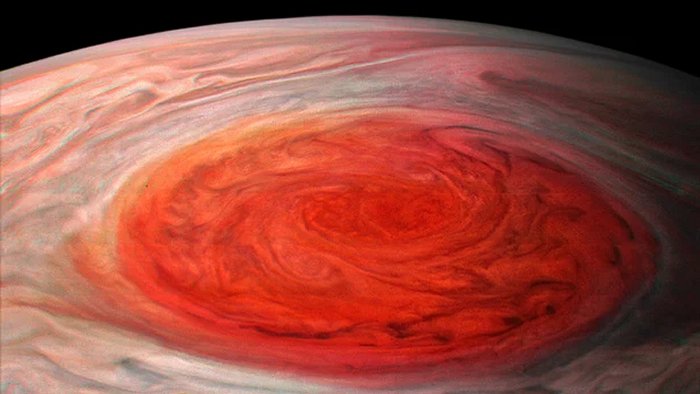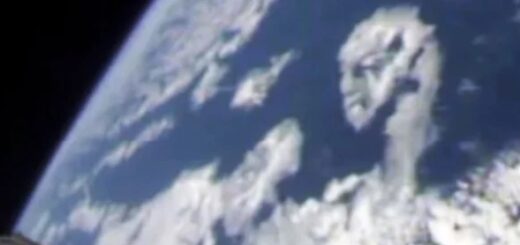Jupiter’s Great Red Spot Shrinks and Grows
Jupiter’s ‘Great Red Spot’ has become taller as it is found to be shrinking, NASA’s new study revealed.
“Storms are dynamic, and that’s what we see with the Great Red Spot. It’s constantly changing in size and shape, and its winds shift, as well,” said Amy Simon, an expert in planetary atmospheres at NASA’s Goddard Space Flight Center in Greenbelt, Maryland and lead author of the new paper.

Great Red Spot(Credit: NASA / JPL-Caltech / SwRI / MSSS / Roman Tkachenko © CC BY)
The ‘Great Red Spot’ – a major storm on the planet – has been continuously observed for more than 350 years and NASA researchers have monitored the phenomenon since 1830. It has been shrinking for a century and a half. Nobody is sure how long the storm will continue to contract or whether it will disappear altogether.
The team traced the evolution of the Great Red Spot, analyzing its size, shape, color and drift rate. It also looked at the storm’s internal wind speeds.
The results suggest that the Great Red Spot recently started to drift westward faster than before. The storm always stays at the same latitude, held there by jet streams to the north and south, but it circles the globe in the opposite direction relative to the planet’s eastward rotation.
“There is evidence in the archived observations that the Great Red Spot has grown and shrunk over time,” said co-author Reta Beebe, an emeritus professor at New Mexico State University in Las Cruces. “However, the storm is quite small now, and it’s been a long time since it last grew.”
The Great Red Spot’s color has been deepening, too, becoming intensely orange since 2014 but researchers aren’t sure why that’s happening.
It’s possible that the chemicals which color the storm are being carried higher into the atmosphere as the spot stretches up.
“If the trends we see in the Great Red Spot continue, the next five to 10 years could be very interesting from a dynamical point of view,” said Goddard co-author Rick Cosentino. “We could see rapid changes in the storm’s physical appearance and behavior, and maybe the red spot will end up being not so great after all.”
Research is published in the Astronomical Journal.



 Creators of mankind
Creators of mankind Description of “Tall white aliens”
Description of “Tall white aliens” Where they came from?
Where they came from? About hostile civilizations
About hostile civilizations The war for the Earth
The war for the Earth “Tall white aliens” about eternal life
“Tall white aliens” about eternal life Video: “Nordic aliens”
Video: “Nordic aliens” Aliens
Aliens Alien encounters
Alien encounters The aliens base
The aliens base UFO
UFO Technology UFO
Technology UFO Underground civilization
Underground civilization Ancient alien artifacts
Ancient alien artifacts Military and UFO
Military and UFO Mysteries and hypotheses
Mysteries and hypotheses Scientific facts
Scientific facts


















